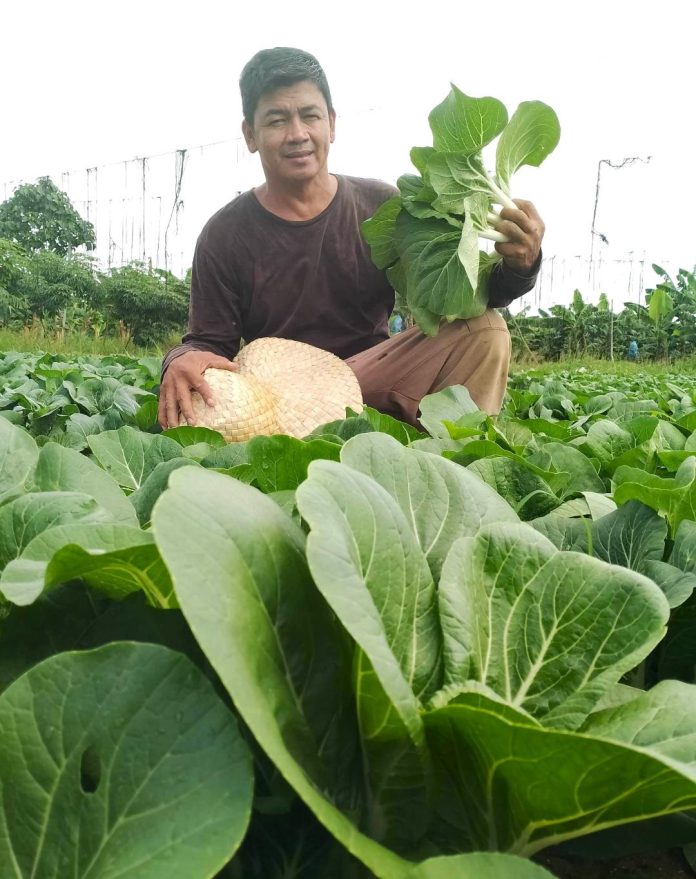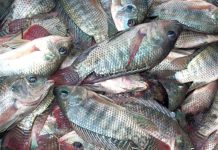Masanobu Fukuoka was a renowned Japanese farmer and philosopher, recognized for his innovative approaches to natural farming and the restoration of desertified areas. In 1988, he traveled to the Philippines to receive the esteemed Ramon Magsaysay Award for Public Service.
“The ultimate goal of farming is not the growing of crops, but the cultivation and perfection of human beings,” Fukuoka once remarked.
The Japanese farmer’s sentiment resonates with the life of Wilbert C. Galo, a farmer in his late 40s. Explore the story of this individual from Santo Tomas, Davao del Norte, to understand the reasons behind this connection. His journey may serve as an inspiration for those considering a path in agriculture.
Galo’s interest in agriculture began in his childhood. He was raised on a farm, as his parents were engaged in rice cultivation. They also grew various vegetables, including string beans and eggplant. In 1986, his father received recognition as one of the outstanding farmers from the municipal office of the Department of Agriculture.
Galo benefited from the government’s Comprehensive Agrarian Reform Program (CARP). The land he now cultivates was previously part of a banana plantation and had fallen into disuse before he took it over.
In 2021, he embarked on the development of the farm. He enlisted the help of family members and friends to prepare the land. They filled in canals and leveled mounds. Due to the high cost of hiring a tractor, Galo and his helpers relied solely on spades and forks to convert the neglected area into a productive farm.
“It was during my tenure at a farm in Malaybalay, Bukidnon, that I developed a passion for agriculture,” he admitted. “Upon returning to my hometown, I applied the farming techniques I had acquired, inspired by my former employer—a farmer who has since become a millionaire through his agricultural endeavors.”
In addition to the knowledge gained from his previous boss, he also assimilated various techniques from other vegetable farms in the vicinity. He meticulously documented any mistakes he made to avoid repeating them in the future.
“I attribute a significant portion of my enhanced farming skills to the training and seminars provided by the Jollibee Group Foundation,” he said.
Galo began with a modest plot of 600 square meters, which has now grown to 3,000 square meters. A notable achievement is that he now owns the land, situated in barangay Kinamayan.
Galo primarily cultivates vegetable crops such as pechay, alugbati, and cucumber. He has established calamansi as a permanent crop. “I choose to plant alugbati and cucumber due to their lower costs and quicker returns on investment,” he said. “The profits I generate from these crops help finance the cultivation of pechay, which requires a greater financial commitment.”
He has opted to grow calamansi to meet the demands of Chowking. “I am considering adding radish in the future, as it is also a rapidly maturing crop that will assist in meeting my daily needs,” he said.
Recently, he has introduced grapes and mulberry to his farm, as these crops are appealing to tourists. “My goal is to transform my farm into a tourist attraction in our region,” he pointed out.
Galo starts harvesting alugbati one month after planting. He utilizes commercial seeds for alugbati, believing they offer superior quality. In the case of cucumbers, he starts harvesting them 35 days after planting.
He buys certified seeds from East-West Seeds and Kaneko in the town center. “The quality of their seeds is unquestionable, as both brands are highly regarded,” he said.
He begins by planting cucumber seeds in a seedling tray. After three days, once the seedlings have germinated, he moves them to the nursery. It takes an additional seven days before he transplants them into the farm plots.
A similar process is followed by alugbati. He sows the seeds in a seedling tray, and one week later, after germination, he transfers them to the nursery, followed by transplantation to the farm plots fifteen days thereafter. He irrigates his crops during dry spells.
In the event of rain, he monitors the plots to check if the surface has dried. As soon as he observes that the surface is dry, he promptly waters the crops, particularly the cucumbers, which are prone to dehydration. He found out that the stalks of alugbati, when lacking sufficient water, fail to grow long.
In order to ensure adequate water supply for both crops, he employs a catch basin method for preparing the plots. “I excavated the surface to a greater depth to allow water to infiltrate and retain moisture for an extended period,” he explained.
Galo supplies his vegetable crops with the essential fertilizers required for optimal growth. “The composition is balanced; 50% organic and 50% synthetic,” he disclosed. “Prior to planting, I incorporate compost such as rice straw humus and carbonized rice hull.”
One week after planting, he administers 5 grams of urea per hill. “Each subsequent week, I increase the dosage by 5 grams until it reaches 25 grams. After that point, I cease fertilization as the crop begins to yield less,” he said.
Galo emphasizes his focus on pechay by stating, “It is my moneymaker.” From an economic perspective, cultivating pechay enhances food availability, promotes health among the population, and provides individuals with a source of income.
Similar to alugbati and cucumber, Galo categorizes pechay as a “fast crop,” as it can be harvested as early as 25 days after planting. To ensure a continuous supply of harvests throughout the year, he strategically divides his farm into three sections: one section is designated for new plantings, another is prepared for harvesting, and the final section is currently undergoing the harvesting process.
Galo schedules his pechay harvests for Wednesdays and Saturdays, while reserving Sundays and holidays for fertilization, seedling cultivation, and planting activities.
Galo experiences no difficulties in marketing his vegetables, as he has established a loyal customer base in the public market. The pricing of his produce is influenced by the farmgate price. He notes that the price of cucumbers varies, unlike that of pechay, which he sells for P50 to P60 per kilogram.
“The price is elevated because my customers are aware of the superior quality of my pechay. Furthermore, they remain fresh for an extended period,” he explained.
When inquired about the challenges he faces in farming, he states, “Primarily, it concerns the weather conditions,” suggesting that these issues may be linked to climate change.
He also contends with diamondback moth infestations that affect his main crop from December to February, particularly during periods of excessive rainfall. Thus, he applies yellow label chemicals to the crops 15 days prior to harvesting.
Despite the modest size of his farm, he successfully maintains its profitability. “My farm may be small, but the revenue is substantial,” he remarked. “This is due to the systematic approach I employ—everything is meticulously programmed, from bed preparation to planting, irrigation, and harvesting. I utilize farming tools that I have crafted myself.”
The achievements of his farm have largely gone unrecognized, attracting a diverse array of visitors, including students, fellow farmers, and entrepreneurs. “There is no admission charge, as my facilities are still limited. Moreover, I wish to share my knowledge with those genuinely interested in agriculture,” he explained.
Looking ahead, he aspires to establish his own greenhouse and envisions transforming the farm into an agri-tourism hub, “so I can assist more individuals who are eager to pursue a career in farming.”
He notes that the current generation shows a diminishing interest in agriculture. “A time will arrive when our food production will be at risk due to the lack of individuals engaged in farming. It is essential to motivate some young people to pursue careers in agriculture,” he said.
The Agricultural Training Institute of the Department of Agriculture has indicated that the average age of farmers in the nation is now 57. Many of these older farmers have been working on the land since the 1970s and 1980s.
To ensure the sustainability of food production in the future, the country urgently requires a new generation of farmers.







